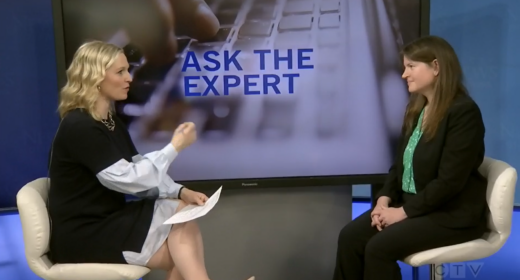The interplay between the Insurance Act, R.S.O. 1990, c. 1.8., the Statutory Accident Benefit Schedule – Accidents after September 1, 2010, O. Reg. 34/10, and the Children’s Law Reform Act, R.S.O. 1990, c. C.12
Imagine a scenario where a parent is killed in a motor vehicle accident, leaving their significant other and young child behind. The surviving parent is tasked with caring for their family, making funeral arrangements, dealing with estate issues, dealing with their own grief and satisfying daily demands.
In the midst of all this, they may also have to consider accident benefits available under their significant other’s policy of automobile insurance and potentially a tort claim against the at-fault driver. In an already difficult situation there is a need to address complex procedural and bureaucratic issues, tight and potentially unforgiving timelines, and significant financial pressures.
When access to no-fault benefits is recognized under the insured’s policy, there remain a series of hurdles to overcome before entitlement to a specific benefit is established. Many of these hurdles are logistical. Both the insurer and the surviving parent may face many difficulties as they attempt to comply with the increasingly impractical procedural requirements contained within Ontario’s Statutory Accident Benefits Schedule such as the payment of death benefits to minors. Unfortunately, there are a shocking number of unanswered questions associated with entitlement to, and the payment of, these benefits themselves.
This article is an overview of the issues associated with the payment of death benefits to minors, and provides guidance on accessing this benefit. It will also highlight factors to consider when determining whether death benefits payable to a minor should be paid into court to the benefit of the minor, or whether they can be paid directly to the surviving parent.
Overview
- October 1, 2015 motor vehicle accident in which the insured, John Doe, was fatally injured;
- At the time of the loss, John Doe had one child under the age of 16; and
- John Doe’s child was a dependent of he and his wife (surviving parent).
Accordingly, pursuant to Section 26(2)2 of the Statutory Accident Benefit Schedule 1 (the “SABS”), the insured’s child is entitled to death benefits in the amount of $10,000.00, unless “Optional Benefits” were purchased, in accordance with section 28(1)(6) of the SABS, which increases the amount payable to $50,000.00.
Legislation
In Ontario, a minor is considered a “party under disability”, and in accordance with Rule 7.01 of the Rules of Civil Procedure2 (the “Rules”) must commence litigation through a litigation guardian. The Rules also generally require that any settlement be approved by the Court. However, Court approval is not always necessary; there is interplay between the Insurance Act3 (the “Insurance Act”), the Children’s Law Reform Act4 and the SABS when addressing death benefits to a “minor”, in accordance with the SABS.
Generally, an insurer who admits liability for insurance money payable to a minor, such as the above described death benefits, must pay the money and any applicable interest into court to the credit of the minors in accordance with s.271(1.1) of the Insurance Act. There is, however, an underutilized escape clause, and it is found at s.271(1.4) of the Insurance Act.
Section 271(1.4) of the Insurance Act provides that an insurer may, despite subsection (1.1), pay the death benefit to a person referred to in subsection 51(1) of the Children’s Law Reform Act, if the total amount of money paid does not exceed $10,000.00.
The Children’s Law Reform Act, subsection 51(1), states that “[i]f no guardian of a child’s property has been appointed, a person who is under a duty to pay money or deliver personal property to the child discharges that duty, to the extent of the amount paid or the value of the personal property delivered, subject to subsection (1.1), by paying money or delivering personal property to,
(a) the child, if the child has a legal obligation to support another person;
(b) a parent with whom the child resides; or
(c) a person who has lawful custody of the child.
As mentioned, subsection 51(1.1) sets the prescribed amount indicating that “[t]he total of the amount of money paid and the value of personal property delivered under subsection (1) shall not exceed the prescribed amount or, if no amount is prescribed, $10,000.[Emphasis added]
As indicated above, if “Optional Benefits” were purchased increasing the amount payable to $50,000.00, then these sections would not apply (i.e. money would be payable into court).
As an aside, subsection 26(1)(a) of the SABS provides that the death benefits are due within 180 days after the accident. As such, it would be imperative that the death benefits be paid within the time required as to not accrue interest which would cause the benefit to exceed the prescribed $10,000.00 limit.
Considerations
In a scenario as described above, although death benefits may be paid directly to John Doe’s wife, consideration should be given to the following:
- While paying the benefits directly may allow for the payment to be made in a more timely fashion, it may be in the child’s best interest to have the money paid into court to protect the child’s rights to the money (i.e. if parent has addiction issues, etc.);
- When death benefits are paid into court, the insurer will receive confirmation that discharges their obligation to the child;
- If there is a concern surrounding the payment of benefits – interim payment vs. final payment – consideration should be given to have the payment made into court;
- If death benefits are paid into court there are additional costs associated with the Motion;
- The parent may require the death benefits immediately for the child (i.e. daycare, medical expenses, etc.); and
- The parent may have enhanced investment options for the death benefits.
Prior to making a decision as to how death benefits are to be paid, an insurer should carefully consider how the surviving parent intends to use the death benefit on behalf of the child. If there are any uncertainties, it would be advisable to pay the death benefits into court in order to preserve the child’s rights to those funds.
The Children’s Law Reform Act provides that the parent with whom a child resides, who receives and holds money, per s.51(1) of the Children’s Law Reform Act, has the responsibility of a guardian for the care and management of the money. As such, it would appear that after an insurer pays the death benefits to the parent, it becomes the parent’s responsibility and legal obligation to ensure that the money is appropriately disbursed in the minor’s best interest.
Disclaimer
Although this Article is designed to provide accurate information, we note that every case is fact specific. If legal advice or other expert assistance is required, please contact the author directly.


